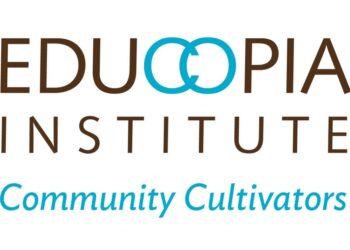Continuing our series of interviews with leaders of scholarly infrastructure organizations, today we will be hearing not just one, but two perspectives — from Juan Pablo Alperin and John Willinsky, Co-Scientific Director of the Public Knowledge Project (aka PKP). PKP is a research and development initiative within Simon Fraser University’s Core Facilities Program, which provides publishing services including the Open Journal System (OJS), Open Preprints System (OPS), and Open Monograph Press (OMP).
Please tell us a bit about yourselves – your roles at PKP, how you got there, and why you embarked on a career in research infrastructure?
John: Juan and I are currently Co-Scientific Directors, positions created in 2022 when Simon Fraser University, PKP’s home institution and where we are both faculty members, made PKP a Core Facility of the university. As for that direction, Juan brings the wonders of data sciences to scholarly communication, while I lean toward the humanities and overlap on the social sciences, which informs PKP’s general direction and various initiatives. So, in a sense, we have only obliquely “embarked on a career in research infrastructure.” In my case, I started PKP in 1998 when, as a professor of education at the University of British Columbia, I thought the internet was just the thing to make research and scholarship far more of an educational public good. It grew out of my experience designing online systems to help tech-savvy high schoolers manage their school’s tech support. I figured that, if I could create open management systems for journals, it might just inspire and assist publishers and editors, who were moving journals online at the time, to look for ways to make their publications open. Sometimes a little naivete can go a long way.
Juan: I don’t think anyone ever intends to dedicate their career to scholarly communications or research infrastructure, but I would say I embraced it early in my time with PKP, when I ran workshops for journal editors all over Latin America. Seeing how they are able to take our open source software and use it to share their knowledge with the world is all the inspiration that I need to do this work.
What do you like most and least about working in research infrastructure?
Juan: My favorite part is definitely brainstorming improvements and imagining solutions when I learn of challenges or needs from our community. The PKP Sprints that we started to organize some years back have been a wonderful venue for this, as they allow community members to bring their own problems and challenges to tackle together as a group. Related, I also love having the opportunity to speak with users of our software, whether it be at the Sprints or at other events. The part that is least enjoyable is chasing grant opportunities as a way of supporting our work. While I enjoy grant writing itself, it is frustrating to not have the resources to do everything that our community would like us to do.
John: In working on the initial version of Open Journal Systems (OJS), I discovered how much I enjoyed the design challenges of capturing the various workflow steps, decisions, options, files, and participants involved in the editorial process of moving journal submissions through to publication. It wasn’t coding or graphic design for me. I was laying out the logic and parts of each screen using Word. While PKP’s infrastructure design is now managed by a team of talented professionals, I still keep my hand in as part of the design review process, as well as taking on new ventures such as the Publication Facts Label (see below for more on this). As for what I’m least enamored with, I’d have to say that it’s with my own impatience over not being able to simply jump in every time I see some aspect that could be improved, as it takes a village and a funder and much patience and persistence.
Based on your own experiences, what advice would you give someone starting, or thinking of starting, a career in research infrastructure?
John: I’d certainly begin with just how rewarding it can be to help others do what they might not otherwise be able to do, and to enable them to do it with great ease and strong support. And then I’d pause, before indicating how challenging it can be to thoroughly and exhaustively develop infrastructure that strikes people as being somehow “intuitive” in its functionality. It takes a service mentality involving a willingness to listen and to iterate without end, with only momentary points of satisfaction before additional shortcomings become apparent.
Juan: There’s little that I can add to John’s answer. Perhaps only to say that, in addition to a service mentality, it requires a willingness to work in the background, without always getting recognition for the contribution you make. Infrastructure is, by one definition, only visible when it breaks. As a result, it is hard to get praise and recognition when you’re providing it seamlessly.
What sort of infrastructure does PKP provide, and who are your users?
Juan: Broadly speaking, PKP has been developing software for improving the quality and quality of research that is made freely available to the public. All of our software is open source and, importantly, it is built in such a way that it can be self-hosted (meaning, it has very low technical requirements and complexity). More specifically, our flagship software is Open Journal Systems (OJS)—a manuscript management and publishing platform for scholarly journals. The software handles everything from article submission, through peer review and editing, as well as the publication into a journal website. Along the way, it handles integrations with other parts of the scholarly system, including metadata sharing, persistent identifiers, etc. We also have two other software systems with a similar purpose: Open Monograph Press (OMP) for academic books and Open Preprint Systems (OPS) for preprints.
How is PKP sustained financially?
John: PKP continues to grow through four principal sources of financial support that have enabled us to answer open research infrasturcture’s always challenging sustainability question for the last 25 years: 1. From the very outset, we have sought research-and-development grants from government agencies and private bodies, which continue to enable us to undertake studies on scholarly communication and to develop new tools and systems. 2. Then in 2005, Simon Fraser University Library reached out to me, and the university has since grown into PKP’s principal administrative home, with all of the institutional support that this entails over all these years. 3. We have also evolved a membership model for PKP involving the ongoing support of libraries and other bodies, with some actively using our publishing platforms and others keen to support sources of open infrastructure for the academic community. 4. And finally, we have for some time been offering hosting services to publishers, libraries, and journals for those who wish to have us expertly maintain, upgrade, and customize their PKP software. PKP issues an Annual Report with our complete financial picture, which is overseen by Simon Fraser University and PKP’s Advisory Committee as central to our governance structure. Let me add that I can appreciate that this financing may give pause to my commercial sector colleagues, who might see aspects of it representing an unfair advantage. For my part, I think it reflects the academic community’s interest in having a diverse market that includes open infrastructure coming from within the community.
As the leaders of a research infrastructure organization, what do you think are the biggest opportunities we’ve not yet realized as a community — and what’s stopping us?
John: Just to be clear on our rather flat leadership structure, Juan and I are directors who serve along with the directors of Development (Alec Smecher), Membership (Urooj Nizami), Operations (Kevin Stranack), and Publishing Services (Marisa Tutt). That said, I think that the most promising opportunities ahead for the infrastructure community involve the current initiatives underway with publisher organizations to improve how we address issues of research integrity at multiple levels. Most of the attention to date has been on data falsification, paper mills, and reviewer scams. But there’s a related opportunity in this age of misinformation, which recognizes that growth of open access (however slow some of us find the pace) carries with it a responsibility for infrastructure developers and publishers to help inform and educate the public about the scholarly publishing standards that distinguish journals as a trusted information source in these trying times. As an example of what this might look like, PKP is developing a Publication Facts Label that, on each article, lists a set of links and data for ascertaining the scholarly editorial oversight, peer review, funding agencies, and other standards related to journal integrity. While we can imagine it having an industry-wide potential, much like the nutrition facts label on food products, we’re still at the early stage of assessing its value using test journals with editors, authors, journalists, and high school science students.
Juan: In addition to what John says, another opportunity lies in the use of preprints as a way of expanding the forms of scholarship that are made available. It is unclear if the community will take advantage of this opportunity, or if preprints will be primarily used as a way of early sharing traditional research papers, but preprints are an opportunity to re-imagine what we publish and how we publish it. This is why we’ve developed Open Preprint Systems, currently used by SciELO Preprints and Jxiv, among others, which are, at least for now, supporting a preprint culture in languages other than English.
Looking at your own organization, what are you most proud of — and what keeps you awake at night?
Juan and John: As our responses were converging, we thought it best to go with a combined effort on this one. For first of all, we do find it humbling to see the tens of thousands of journals and millions of articles that are published using our software and take pride in the truly global nature of the knowledge sharing that’s happening with an assist from OJS. With around 80% of OJS journals publishing from the Global South and around half of journals using OJS publishing in languages other than English, it warms our hearts to know that we are playing a role in enabling those, regardless of where they are in the world or what language they speak, to share their research and scholarship, with the lead taken by groups of scholars and by universities and their libraries.
What worries and challenges us is, on the one hand, how do we and other projects – as we’re hardly alone in offering open infrastructure publishing platforms – find ways of encouraging and facilitating a recognition of this work (so that its contributions and benefits can be fully realized). At the same time, we are deeply concerned about how the inequities that have excluded so many from participating in a global knowledge exchange in the past are simply taking new forms. How can we help bridge the great divide between projects like ours and, although this may seem harsh, what many would identify as the commercial sector’s market failure to deliver open access in a timely manner at a fair price? What is it going to take to bring about universal and sustainable open access, which could well contribute to the future of life on this planet, to put not too fine a point on it?
What impact has/does/will AI have on PKP’s work?
John: Setting aside for the moment the more dire AI predictions, including human extinction, which would certainly have an impact on PKP, I’d point to our long-term AI efforts to create a publishing tool of great potential value to the users of open infrastructure. Moving from old-school rule-bound AI to current generative LLMs, we have been pursuing an open source markup tool that will largely automate the JATS-XML rendering of authors’ submissions as part of the editorial workflow. It could greatly improve typesetting for HTML and PDF outputs, indexing, and other publishing features. Our intermittent efforts on this initiative offer a good instance of the infrastructure developer’s dilemma. Against the pressing demands of platform and workflow refinements and upgrades, there’s the temptation to pursue the Holy Grail of, in this case, equitable access to key publishing tools. Fortunately, we’re not alone in this quest. We’re grateful for open AI developments by GROBID, Métopes, eLife, Coko, and others, including our own Vitaliy Bezsheiko. In fact, we’re at the point of seeking funding to assess, build out, and integrate the pieces needed to create a production-ready JATS-XML plugin and editor. We see it as a great example of how open infrastructure has the potential to benefit the whole industry.
What changes do you think we’ll see in terms of the overall research infrastructure over the next five to ten years, and how will they impact the kinds of roles you’ll be hiring for at PKP?
Juan: To stay, as well, with your AI question above, there’s going to be a growing expectation of smarter infrastructure. If cars and trucks can pretty well go driverless, at this point, what about publishing workflows, quality control checks, and knowledge discovery and translation? This increased responsibility will need to be accompanied by a recognition for the need to support research infrastructure, with multiple overlapping efforts underway to make this a reality. I remain optimistic that all these conversations and efforts will lead to clearer pathways for projects, like PKP and many others, to receive funding from a wide range of stakeholders who indirectly benefit from our work. As infrastructure grows in importance and, I’d hope, support, then I suspect we’ll also see a growing role for these infrastructure developers as actors in the academic community and a corresponding representation of that community on infrastructure projects. We’ve seen some of this with PKP — I find myself participating on the boards of international organizations and projects and, similarly, PKP has community members play a role in its governance. But it will require growing community engagement and outreach teams so that, as infrastructure is less under the hood and more in the driver’s seat, we can ensure that it more than adequately represents the perspectives of our community of users. And with that we both thank you for such an interesting set of questions for reflecting on our work together.



